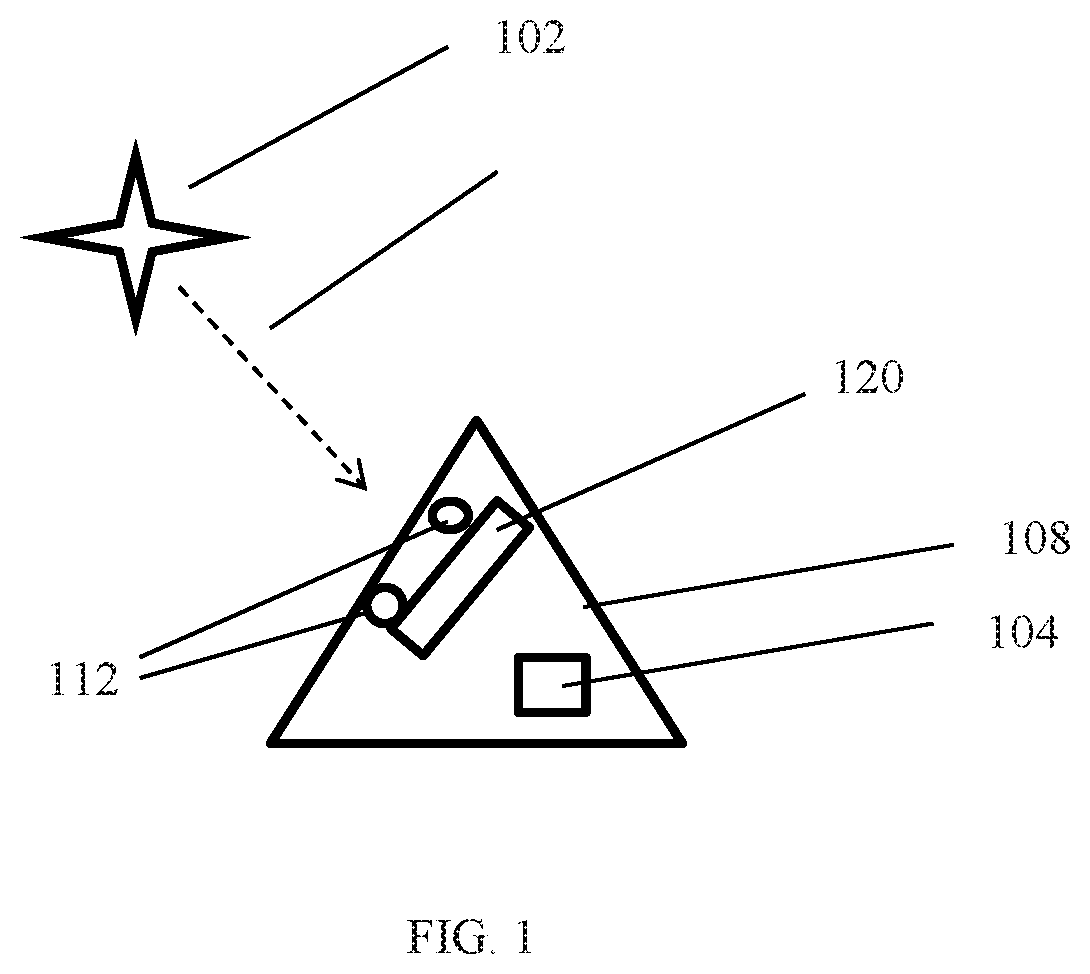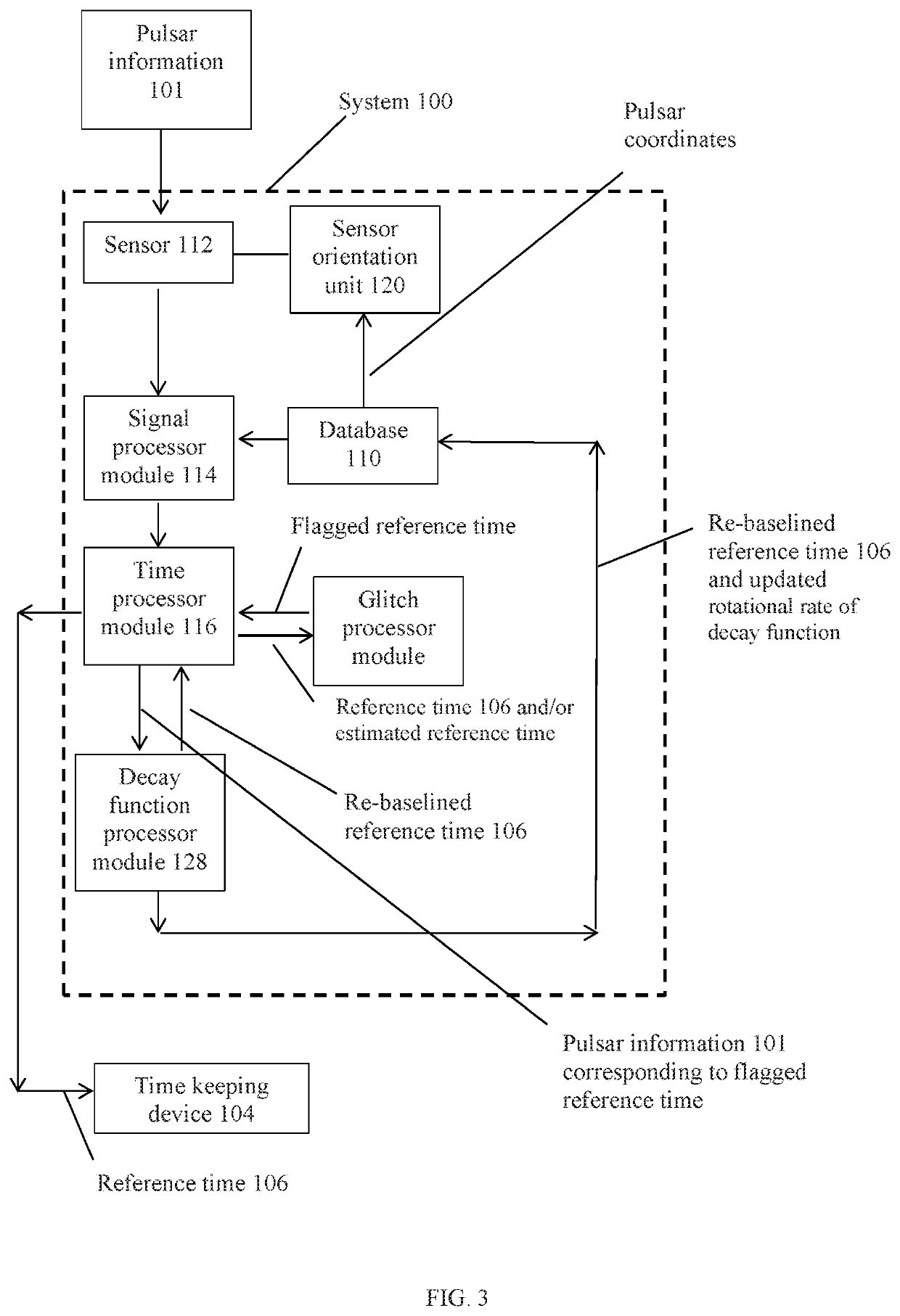System and methods for updating a reference time from a decaying rotational period of a pulsar
a technology of decaying rotational period and reference time, which is applied in the direction of x/gamma/cosmic radiation measurement, using reradiation, instruments, etc., can solve the problems of limited timekeeping methods and known clocks
- Summary
- Abstract
- Description
- Claims
- Application Information
AI Technical Summary
Benefits of technology
Problems solved by technology
Method used
Image
Examples
Embodiment Construction
[0016]Referring to FIGS. 1-4, an embodiment of the system 100 can relate to updating a reference time from a decaying rotational period of one or more pulsars 102. A pulsar 102 is a neutron star that emits a beam of electromagnetic radiation. The pulsar 102 also rotates, and as it rotates the beam of electromagnetic radiation is observable as a series of pulses when an observer comes into the path of the rotating beam. The beam rotates at a very stable rate making it suitable for maintaining a frequency standard (or time period) for a time keeping device 104. While the rate of rotation does decay, it does so at a very slow and very predictable rate. An embodiment of the system 100 can be configured to use a previously established reference time of a pulsar 102 and generate an updated reference time 106 based on the observable decaying rotational period of the pulsar 102. Some embodiments can use plural pulsars 102 to improve the accuracy of the updated reference time 106. The update...
PUM
 Login to View More
Login to View More Abstract
Description
Claims
Application Information
 Login to View More
Login to View More - R&D
- Intellectual Property
- Life Sciences
- Materials
- Tech Scout
- Unparalleled Data Quality
- Higher Quality Content
- 60% Fewer Hallucinations
Browse by: Latest US Patents, China's latest patents, Technical Efficacy Thesaurus, Application Domain, Technology Topic, Popular Technical Reports.
© 2025 PatSnap. All rights reserved.Legal|Privacy policy|Modern Slavery Act Transparency Statement|Sitemap|About US| Contact US: help@patsnap.com



